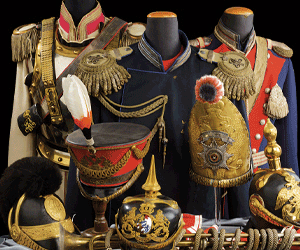Zollgrenzschutz Finanpräsident Zoll & Ministerialrat Collar Tabs
SKU: 73.GOR.03.02.02.003
Estimated market value:

Estimated market value:
Attributes
History
The Zollgrenzschutz (Customs Border Guards) has its roots in the Grenzaufsichtsdienst (Border Surveillance Service) established in 1919. Before the First World War, every German state managed its own border units, but in the Weimar Republic this was done at the national level for the first time. The Grenzaufsichtsdienst was a subdivision of the Reichsfinanzministerium (Ministry of Finance). It is not to be conflated with the Grenzpolizei (Border Police), a subdivision of the German Police.
Initially, the organisation was tasked with preventing smuggling and illegal border crossings. This changed when its members were deployed to most of the occupied territories during the war. Border guards saw action fighting enemy military troops, especially during the final war years, as well as partisans. They were also tasked with foiling espionage.
Under Third Reich rule, not much changed in the beginning. However, SS leader Heinrich Himmler, who took control of the German Police in 1936, also tried to be placed in charge of the border guards. His advances were warded off in 1937. At the same time, the term Zollgrenzschutz was first used, and sometimes Zollgrenzdienst (Customs Border Service) as well.
1937 also brought changes to the border guards’ uniforms, which were designed in a new style more akin to the uniforms of the army. Throughout the late 1930s, personnel numbers increased in preparation for the coming war. A need was felt to watch the neighbouring countries more closely.
In order to achieve readiness, especially in the case of an armed invasion, the VGAD (Verstärkter Grenzaufsichtsdienst, Reinforced Border Surveillance Service) was trained as an auxiliary border guard force. It was made up of conscripts that had received basic military training. They were called into action during the annexation of Austria, the Sudetenland, Memel, and Czechoslovakia. During the war, the VGAD became a permanent part of the Zollgrenzschutz to the point that both names were used interchangeably.
In July 1944, after the Stauffenberg assassination attempt, Himmler finally convinced Hitler to place the Zollgrenzschutz under his control, and it was merged with the border police.
Zollgrenzschutz collar tabs were introduced on July 31, 1937. Prior to this date, a different set of collar tabs had been worn, but no information was available about their design at the time of research. The new collar tabs were described to now indicate the wearer’s rank, which likely means the ones worn prior to July 1937 did not, and may have indicated the wearer’s rank group instead.
In September of 1940, the higher leader collar tabs for the four highest ranks received a new design. The first pattern was deemed too similar to that of the army, so a second pattern was introduced instead.
All collar tabs feature dark green cloth, an outer border with an interior sawback design, and around it dark green piping. The sawback border is gold-coloured for the four highest ranks and silver-coloured for all other ranks.
The Reichsfinanzminister, Staatssekretär, and Generalinspekteur & Ministerialdirektor 1st pattern collar tabs feature a gold-coloured ear of wheat. The 2nd pattern features a gold-coloured acanthus branch and one rank pip.
Oberfinanzpräsident 1st pattern collar tabs are the same as those worn by the ranks above. The 2nd pattern features a gold-coloured acanthus branch, but no rank pip.
All following ranks feature silver-coloured embroidery.
Finanpräsident Zoll & Ministerialrat collar tabs feature two acanthus leaves held together by a ribbon at the bottom and forming a semi-circle. Additionally, there are two rank pips in between the leaves.
Oberregierungsrat and Oberzollrat & Regierungsrat collar tabs are of the same design as those of the rank above, except that only one rank pip was worn.
Zollrat collar tabs are of the same design as those of the rank above, except that no rank pip was worn.
Zollamtmann and Oberzollinspektor & Regierungsassessor collar tabs feature two acanthus leaves held together by a ribbon at the bottom and reaching towards the upper corners. Additionally, there are two rank pips in between the leaves.
Zollinspektor and Außerplanmäßiger Zollinspektor collar tabs are of the same design as those of the rank above, except that only one rank pip was worn.
Oberzollsekretär collar tabs are of the same design as those of the rank above, except that no rank pip was worn.
Zollsekretär collar tabs feature two horizontally arranged acanthus leaves held together by a ribbon at the bottom. Additionally, there are two rank pips in between the leaves.
Zollassistent collar tabs are of the same design as those of the rank above, except that only one rank pip was worn.
Außerplanmäßiger Zollassistent, Zollbetriebsassistent, Zolloberwachtmeister, and Zollwachtmeister collar tabs are of the same design as those of the rank above, except that no rank pip was worn.
Finanzanwärter Zoll, Zollanwärter, Zollgrenzangestellter, and Zollmann & Grenzwachmann collar tabs don’t feature any additional embroidery.


Comments
Sign in to comment and reply.


Scroll Top